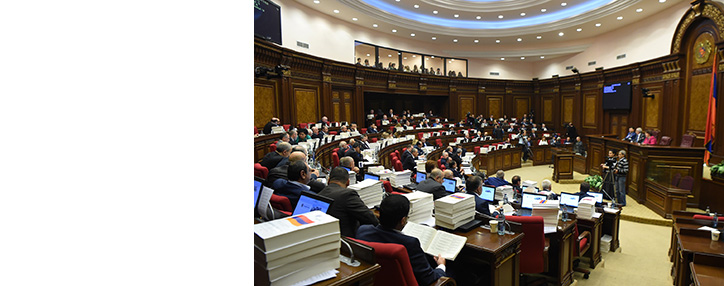Armenia's ruling party wins 'milestone' elections
03.04.2017,
09:43
The ruling Republican Party of Armenia, led by president Serzh Sargsyan, has won the first parliamentary elections since the adoption of constitutional reforms in 2015, which will shift the country away from the so-called semi-presidential form of government to a parliamentary one after Sargsyan's second and final term ends in 2018.

YEREVAN, April 3. / ARKA./ The ruling Republican Party of Armenia, led by president Serzh Sargsyan, has won the first parliamentary elections since the adoption of constitutional reforms in 2015, which will shift the country away from the so-called semi-presidential form of government to a parliamentary one after Sargsyan's second and final term ends in 2018.
The Central Elections Commission (CEC) said with votes tallied from 1,886 polling stations out of 2,009, the Republican Party of Armenia has garnered 49.21% of the votes, the Tsarukyan bloc, led by wealthy businessman Gagik Tsarukyan, has collected 27.38% of the votes, the opposition Yelk bloc has won 7.72% of the votes and the Armenian Revolutionary Federation/ Dashnaktsutyun (ARF) has won 6.69% of the votes. The voter turnout was 60.68%.
Five parties and four electoral blocs ran in yesterday’s vote, with at least 101 parliamentary seats up for grabs under a system of proportional representation. A party needs to clear a five-per cent threshold to be represented in parliament, while an electoral bloc — an entity made up of several parties — needs to garner at least seven per cent of the vote. The voter turnout was 60.96%,
Eduard Sharmaznaov, a spokesman for the Republican Party of Armenia, said on April 2 evening that his party may form a coalition government with the Armenian Revolutionary Federation/Dashnaktsutyun, its current coalition government partner.
"According to the elections' early results, the Republican Party has every chance of forming the new government," Sharmazanov told reporters.
According to the CEC, the number of Armenian citizens eligible to vote stands at 2, 587,706 people. According to the National Statistical Service, Armenia’s permanent population as of January 1, 2017 stood at 2,986,500.
Over 28,000 local observers from 49 public organizations and over 640 foreign observers representing six organizations - the OSCE Office for Democratic Institutions and Human Rights (ODIHR), the Parliamentary Assembly of the Council of Europe (PACE), the Commonwealth of Independent States (CIS), the CIS Interparliamentary Assembly, the OSCE Parliamentary Assembly and the European Parliament watched the polls. -0-
The Central Elections Commission (CEC) said with votes tallied from 1,886 polling stations out of 2,009, the Republican Party of Armenia has garnered 49.21% of the votes, the Tsarukyan bloc, led by wealthy businessman Gagik Tsarukyan, has collected 27.38% of the votes, the opposition Yelk bloc has won 7.72% of the votes and the Armenian Revolutionary Federation/ Dashnaktsutyun (ARF) has won 6.69% of the votes. The voter turnout was 60.68%.
Five parties and four electoral blocs ran in yesterday’s vote, with at least 101 parliamentary seats up for grabs under a system of proportional representation. A party needs to clear a five-per cent threshold to be represented in parliament, while an electoral bloc — an entity made up of several parties — needs to garner at least seven per cent of the vote. The voter turnout was 60.96%,
Eduard Sharmaznaov, a spokesman for the Republican Party of Armenia, said on April 2 evening that his party may form a coalition government with the Armenian Revolutionary Federation/Dashnaktsutyun, its current coalition government partner.
"According to the elections' early results, the Republican Party has every chance of forming the new government," Sharmazanov told reporters.
According to the CEC, the number of Armenian citizens eligible to vote stands at 2, 587,706 people. According to the National Statistical Service, Armenia’s permanent population as of January 1, 2017 stood at 2,986,500.
Over 28,000 local observers from 49 public organizations and over 640 foreign observers representing six organizations - the OSCE Office for Democratic Institutions and Human Rights (ODIHR), the Parliamentary Assembly of the Council of Europe (PACE), the Commonwealth of Independent States (CIS), the CIS Interparliamentary Assembly, the OSCE Parliamentary Assembly and the European Parliament watched the polls. -0-



